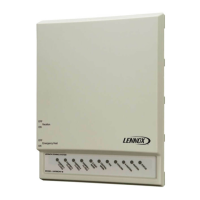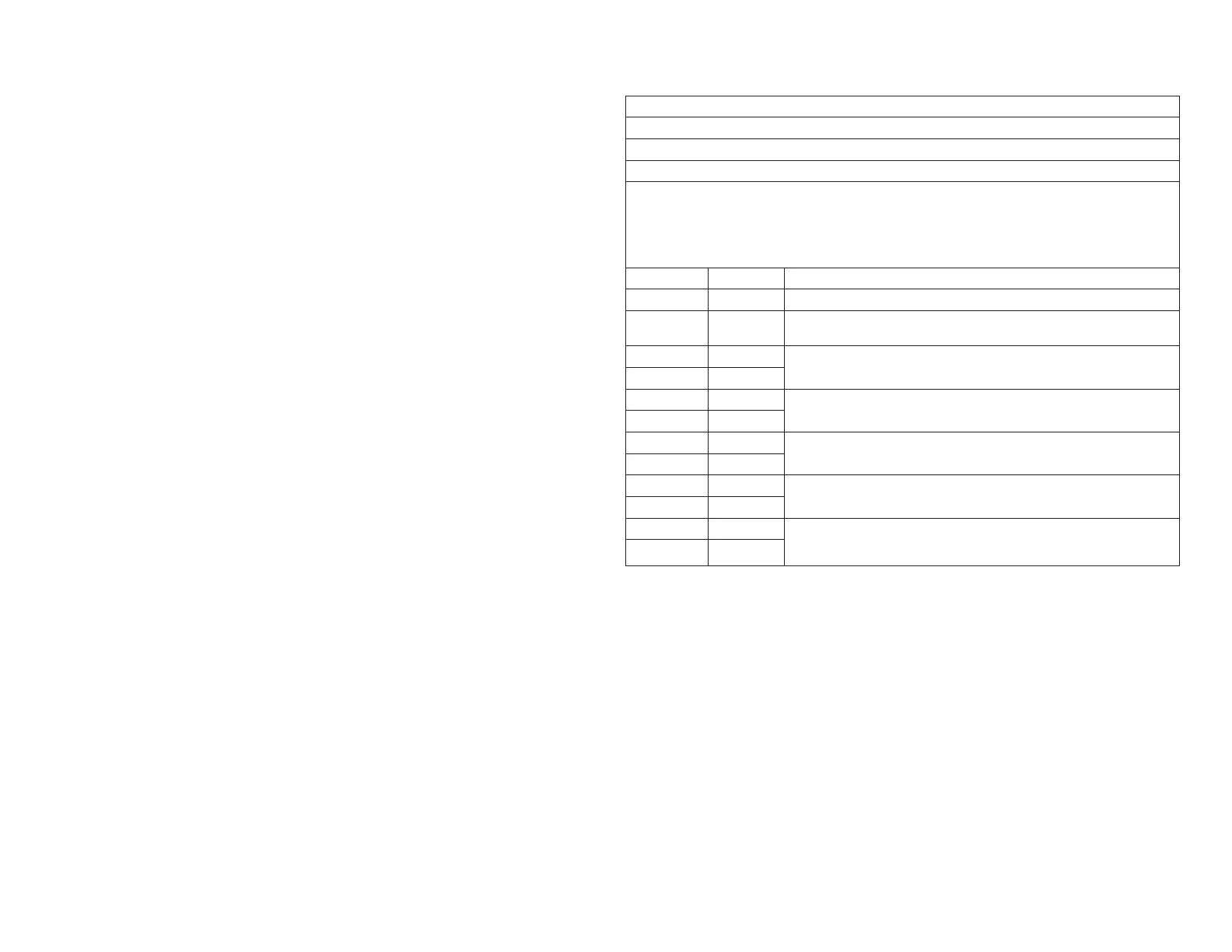31
3.3.4.3. Zone Mode
The zone control mode (Vacation switch OFF) utilizes the zone control system’s
full potential. While in this mode, the zone control system will respond to demands
from any zone, controlling dampers and regulating blower CFM to maintain comfort.
When the system is in zone mode, the zone control system responds to demands
from any zone thermostat.
The only OPEN supply-air dampers are those zones from which a demand was
received; all other dampers are CLOSED. The blower operates at a speed based
on the position of the Zone PIAB selection jumpers (and the heating air reduction
jumper, if a call for heat is present).
NOTE: To ensure that the zone control performs optimally, avoid mixing air
between the zones.
3.3.4.4. Central (Vacation) Mode
When in central mode (Vacation switch ON), the system responds only to heating
or cooling demands from the central control (Zone 1) thermostat; all zones will
receive conditioned air. All dampers remain open and the blower operates at full
speed (minus the amount selected by the heating air reduction jumper).
In Fan-Auto mode, the blower will cycle on and off with each demand. During gas
or electric-strip heating, the blower may continue after the end of a demand until
theheateriscooledsufciently.
3.3.4.5. Cooling Operation
When the Harmony III™ zoning system receives a thermostat cooling call, the
following events occur:
• Thezonecontrolcheckstomakesureithasbeenatleastveminutessincethe
last cooling call ended to prevent starting against high head pressures.
• Whentimed-offdelayissatised,thezonecontrolstartstheoutdoorunitwith
1st-stage compressor and slowly increases the indoor blower speed to achieve
proper CFM. Four minutes must elapse at this state to allow the system to reach
steady-state operation before staging again.
• The zone control checks the discharge air sensor for proper temperature. If
measured temperature is 7ºF or more above the cooling staging jumper setting,
then Y2 energizes (if available). If both stages of cooling are energized and 4
minutes has elapsed since the last staging event, and the discharge air sensor
(DAS) detects a temperature less than the cooling staging jumper, then Y2 is
staged off.
• If, at any time, the discharge air sensor measures a temperature of 45ºF or
below, the zone control de-energizes the Y1 and/or Y2 output, stopping the
compressor and preventing the indoor coil from freezing up. The compressor will
not be energized again until the temperature at the DAS rises by 10ºF and the
timed-off delay expires. During this time, continuous fan is supplied to the zones
calling for cooling.
3.3.5.
3.3.6. InstallationSetupWorksheetsforHoneywell2-StageIFC
Control — Cooling/Heating (Non-Heat Pump)
Job Name:
Indoor Unit Model:
Outdoor Unit Model:
Indoor Unit Setup:
9 Cut on-board link W914 DEHUM OR HARMONY (R to DS) on furnace IFC control (if not cut,
fuse will blow in Harmony III zoning system control board).
9 Cut and tape wires from pin # 2 and pin #13 on plug J46 of the variable speed motor wiring
harness routed from the motor to the furnace Integrated control (IFC).
9 Furnace IFC Control DIP switch settings (ON or OFF):
DIPSwitch ON or OFF Condition
1 OFF DIP switch 1 must be set to Off for 2-stage heating operation
2 OFF
DIP switch 2 determines 2nd stage heat time delay and is ignored by
Harmony III zoning system
3 ON
DIP switches 3 and 4 determines heating blower off delay,
recommended is 180 sec
4 ON
5
DIP switches 5 and 6 determines 2nd stage cooling blower speed or
maximum system air vol.
6
7
DIP switches 7 and 8 determine blower “adjust” setting for maximum
system air volume
8
9 OFF
DIPswitches9and10determinescoolingblowerrampingproleand
is ignored by Harmony III zoning system
10 OFF
11 OFF
DIP switches 11 and 12 determines heating blower speed and is
ignored by Harmony III zoning system
12 ON

